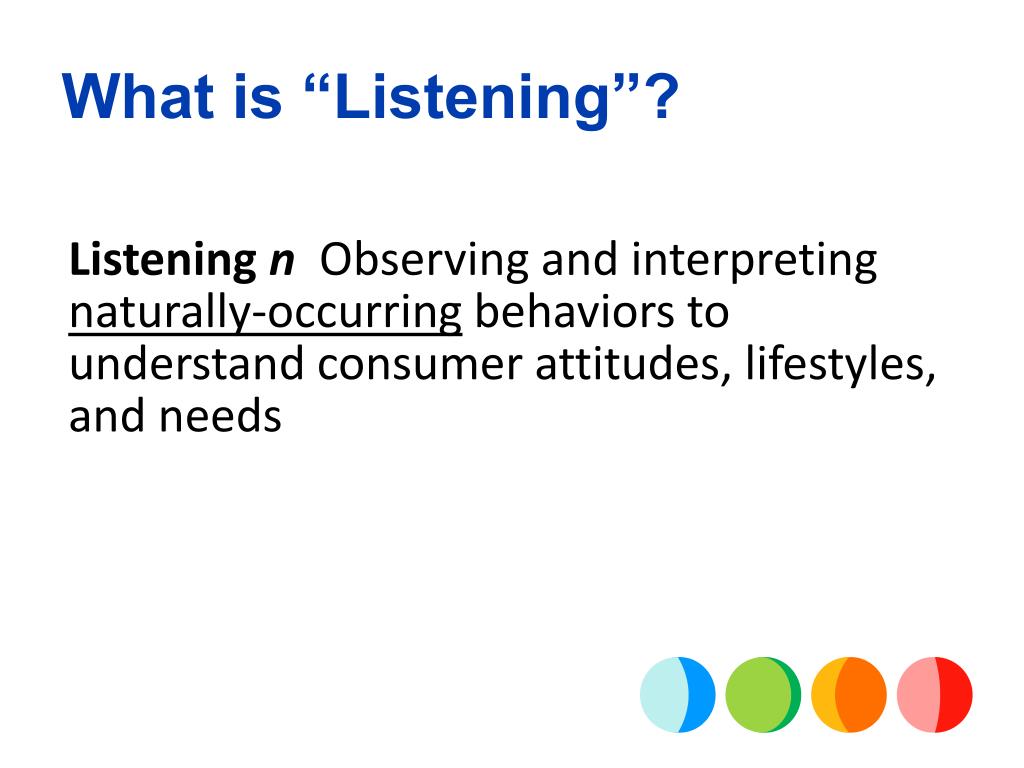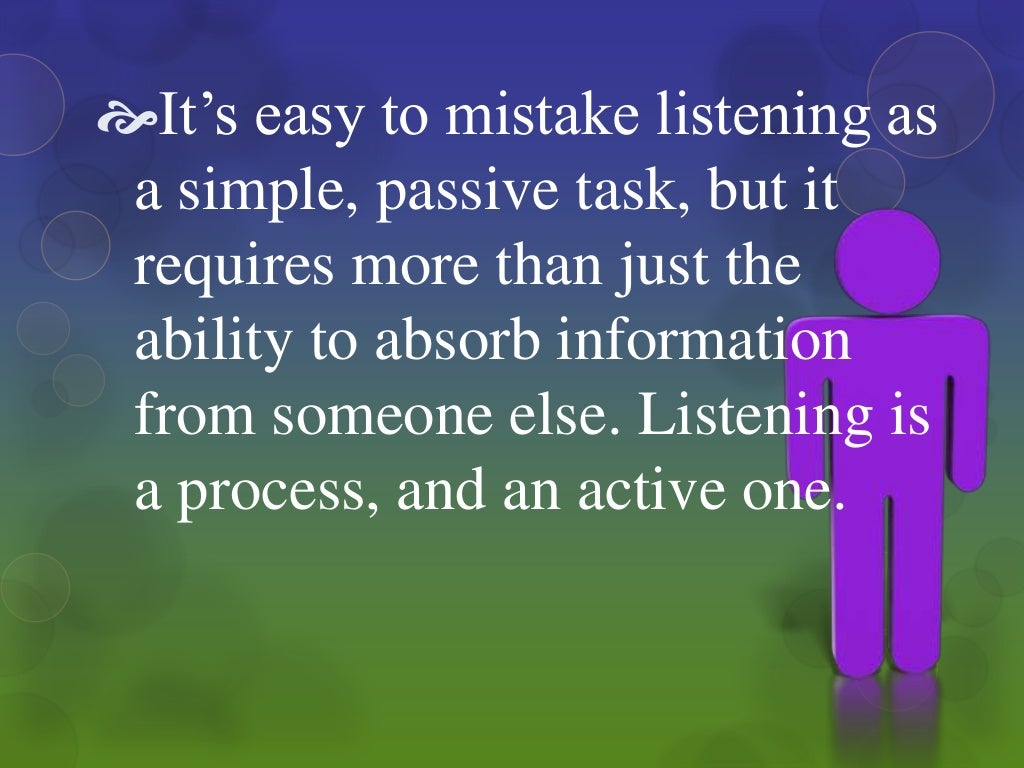

Whenever you listen to learn something, you are engaged in informational listening. In reality you may have more than one goal for listening at any given time – for example, you may be listening to learn whilst also attempting to be empathetic. Therapeutic or Empathetic Listening (Listening to Understand Feeling and Emotion).Critical Listening (Listening to Evaluate and Analyse).Informational Listening (Listening to Learn).

The three main types of listening most common in interpersonal communication are: Listening types can be defined by the goal of the listening. In many listening situations it is vital to seek clarification and use skills such as reflection aid comprehension.ĭiscriminative and comprehensive listening are prerequisites for specific listening types. These non-verbal signals can greatly aid communication and comprehension but can also confuse and potentially lead to misunderstanding. This problem can be multiplied in a group setting, like a classroom or business meeting where numerous different meanings can be derived from what has been said.Ĭomprehensive listening is complimented by sub-messages from non-verbal communication, such as the tone of voice, gestures and other body language. Comprehensive listening is further complicated by the fact that two different people listening to the same thing may understand the message in two different ways. Using overly complicated language or technical jargon, therefore, can be a barrier to comprehensive listening. In order to be able use comprehensive listening and therefore gain understanding the listener first needs appropriate vocabulary and language skills. Like discriminative listening, comprehensive listening is fundamental to all listening sub-types. Comprehensive ListeningĬomprehensive listening involves understanding the message or messages that are being communicated.

You are not understanding what is being said but using discriminative listening to gain some level of comprehension of your surroundings. You can probably distinguish between different voices, male and female, young and old and also gain some understanding about what is going on around you based on the tone of voice, mannerisms and body language of the other people. Perhaps passing through an airport in another country. Imagine yourself surrounded by people who are speaking a language that you cannot understand. When discriminative listening skills are combined with visual stimuli, the resulting ability to ‘listen’ to body-language enables us to begin to understand the speaker more fully – for example recognising somebody is sad despite what they are saying or how they are saying it.

Differences include many subtleties, recognising foreign languages, distinguishing between regional accents and clues to the emotions and feelings of the speaker.īeing able to distinguish the subtleties of sound made by somebody who is happy or sad, angry or stressed, for example, ultimately adds value to what is actually being said and, of course, does aid comprehension. Not only can we recognise different voices, but we also develop the ability to recognise subtle differences in the way that sounds are made – this is fundamental to ultimately understanding what these sounds mean. As we grow older and develop and gain more life experience, our ability to distinguish between different sounds is improved. In early childhood, for example, a distinction is made between the sounds of the voices of the parents – the voice of the father sounds different to that of the mother.ĭiscriminative listening develops through childhood and into adulthood. This is the most basic form of listening and does not involve the understanding of the meaning of words or phrases but merely the different sounds that are produced. The two main types of listening - the foundations of all listening sub-types are:ĭiscriminative listening is first developed at a very early age – perhaps even before birth, in the womb. Listening: the process of receiving, constructing meaning from, and responding to spoken and/or non-verbal messages. Personal and Romantic Relationship Skills.Conflict Resolution and Mediation Skills.Non-Verbal Communication: Face and Voice.Tips for Effective Interpersonal Communication.The SkillsYouNeed Guide to Interpersonal Skills


 0 kommentar(er)
0 kommentar(er)
